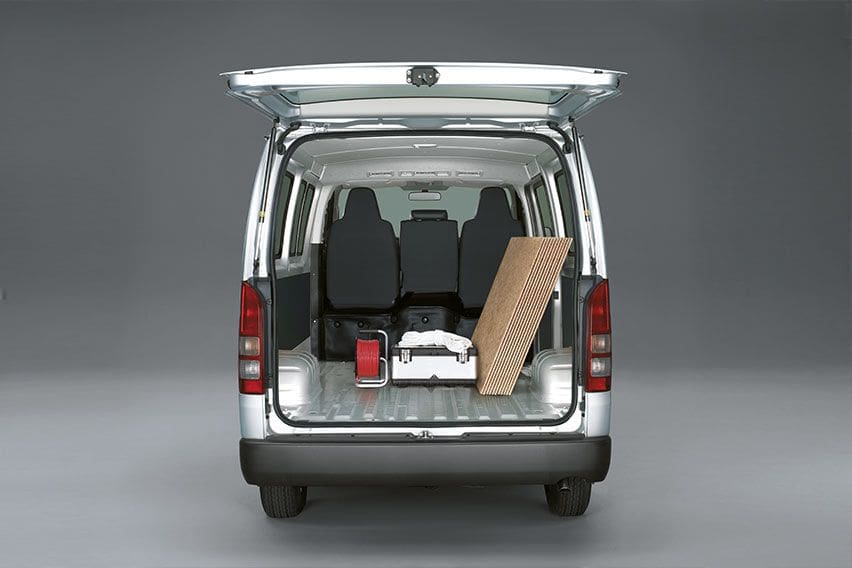You’re going on a trip in your minivan, and as you’re packing, you start wondering if you can safely load so much in it. You can prevent accidents and lengthen the life of your vehicle by being aware of the cargo weight guidelines for your minivan and learning how to measure the cargo weight accurately. So how much weight can you load in your minivan?

Most minivans can carry between 1,000-1,500 pounds (453-680 kg) of weight. However, the exact weight limit can vary depending on the make and model of the minivan. To find out the specific weight limit of a particular minivan, it’s best to consult the owner’s manual or contact the manufacturer directly.
This article will review the key terms you will need to know to determine how much weight your car should carry. I’ll also review tips for measuring the total weight of your van home and make suggestions for how to reduce your van life payload.
How To Separate Curb Weight and Payload Capacity
When measuring your vehicle’s total weight, you must separate curb weight and payload weight. Doing so is an essential step in ensuring an accurate calculation of how much weight your van is carrying.
Gross Vehicle Weight Rating (GVWR)
The gross vehicle weight rating, or GVWR, is the manufacturer’s recommendation for the upper limit of the weight of the car itself and all cargo, including passengers and belongings. You can find a local weighing station to measure the weight of your vehicle before and after adding in items using this public scale locator by Penske Resources.
Curb Weight
Curb weight refers to the weight of the car itself. This category indicates how much the vehicle weighs when no cargo and passengers are present. As an important note, this category would include crucial aspects such as the spare tire.
Payload Capacity
The payload capacity refers to how much weight the vehicle should carry. The manufacturer publishes recommendations for a suggested maximum amount in pounds of cargo that you can have onboard. Remember that your car will be able to carry more than this recommended amount but that doing so can be unsafe and can cause damage to your minivan.
What Is the Average Payload Ability for Minivans?
While the average payload ability for modern minivans can range between a half-ton to one ton, some van lifers opt for refurbishing older models. Let’s take a closer look at the average payload ability for minivans.
Average Payload Ability for Vintage Models
The vintage models can require the owner to do some sleuthing to find information on the maximum cargo capacity. The online forums at RV.net are a beneficial resource to post a question if you cannot find information about your specific van.
Average Payload Ability and GVWR for Modern Models
If you have selected a more recent minivan option, you will have much more information available to you by the manufacturer about weight capacities. Arguably, the most critical specifications for your vehicle are the average payload ability and the gross vehicle weight ratings (GVWR).
Let’s take a look at some of the more popular models and their payloads. (specs will vary depending on the exact model’s year and options)
- Honda Odyssey: The 2021 Honda Odyssey LX offers a payload limit of 1,621 pounds (735 kg) and a GVWR of 6,019 pounds (2,730 kg).
- Chrysler Pacifica: The 2021 Chrysler Pacifica offers a payload limit of 1,725 pounds (782 kg) and a GVWR of 6,055 pounds (2,747 kg).
- Toyota Sienna: The 2021 8-passenger Toyota Sienna LE offers a payload limit of 1,335 pounds (606 kg). Toyota has not released a GVWR for this particular year.
- Dodge Grand Caravan: The 2020 Dodge Caravan offers a payload limit of 1,540 pounds (699 kg) and a GVWR of 6,050 pounds (2,744 kg).
- Kia Sedona: The 2021 Kia Sedona offers a payload limit of 1,642 pounds (745 kg) and a GVWR of 6,085 pounds (2,760 kg).
- Chrysler Voyager: The Chrysler Voyager offers a payload limit of 1,635 pounds (742 kg) and a GVWR of 6,055 pounds (2,748 kg), according to the official Chrysler website.
- Mercedes-Benz Metris: The Mercedes-Benz Metris offers a payload limit of 2,205 pounds (1,000 kg) and a GVWR of 6,393 pounds (2,900 kg), according to the official Mercedes-Benz website.
- Ford Transit Connect: The Ford Transit Connect offers a payload limit of 1,550 pounds (703 kg) and a GVWR of 5,130 pounds (2,326 kg), according to the official Ford website.
- Ram ProMaster City Wagon: The Ram ProMaster offers a payload limit of 1,890 pounds (855 kg) and a GVWR of 5,395 pounds (2,447 kg), according to the official Ram website (https://www.ramtrucks.com/2022/ram-promaster-city.html).
If you want to know the maximum payload ability and GVWR of your vehicle, it’s best to either contact your seller or check the official website for that specific make and model.
How To See if You Are Overloading Your Minivan

At this point, you are likely armed with the knowledge of your maximum payload limit and maximum gross vehicle weight rating (GVWR) for your particular minivan make and model. You can see if you are overloading your minivan and make changes through several different approaches.
The following sections show you what to consider when packing your minivan.
Weighing Cargo As You Pack
You can weigh the cargo as you prepare your new home.
Create a list of everything that the vehicle will be carrying, weigh these items, and make notes. A Fuzion Shipping Scale on Amazon.com allows you to accurately measure things up to 86 lbs. (39 kg)
The accuracy resolution of the shipping scale is 0.01 lb / 0.1 oz / 5g. Capacity is up to 86 lb / 39 kg. 5 Measurement modes: lb / lb.oz / oz / g / kg. Fuzion digital postal scale is perfect for small parcel shipping which ensure correct postage without overpayment.
Don’t forget yourself. Be sure to include a passenger manifest list as well, along with your personal measurements.
If you have pets, you will need to weigh your furry friends as well. You can have your pet weighed at the vet, or you can use a scale at home. W.C Redmon Precision Digital Pet Scales on Amazon.com offers a helpful tool. It measures animals in either pounds or kilograms and has a previous weight memory to help you if you have more than one animal.
Now you can estimate the total weight of everyone in the car and the total weight of all items that you will load into the vehicle. Is this weight less than the GVWR? If so, you’re all set!
Checking the Total Weight of Your Minivan After Packing
You can also check the total weight of your minivan after packing by visiting one of the public scale locations. As I mentioned above, Penske Resources offers a helpful public scale locator.
Remember to bring all friends and family members that you plan to include in your new van dwelling adventures. It would be best to have an accurate reading of who all and what all will be in your van home as you make your move.
Inspecting Your Minivan Visually
A more straightforward method to checking if your minivan is overloaded is to look at the vehicle. Assessing by sight is by no means a scientific method, but you should be able to see if the minivan is sitting low under too heavy a load. If it is tilted in the back, it’s probably overloaded.
Final Thoughts
In conclusion, the weight limit of a minivan can vary depending on the make and model, but most minivans can carry between 1,000-1,500 pounds (453-680 kg) of weight.
To determine the weight of your minivan, you can use a commercial scale or visit a weigh station.
It’s important to remember that exceeding the weight limit of a minivan can compromise its safety and performance, so it’s always best to stay within the recommended weight range.
If you’re unsure about the weight limit of your minivan, consult the owner’s manual or contact the manufacturer directly. By following these guidelines and measuring the weight of your minivan, you can ensure that it is able to safely and efficiently carry the weight you need it to.

